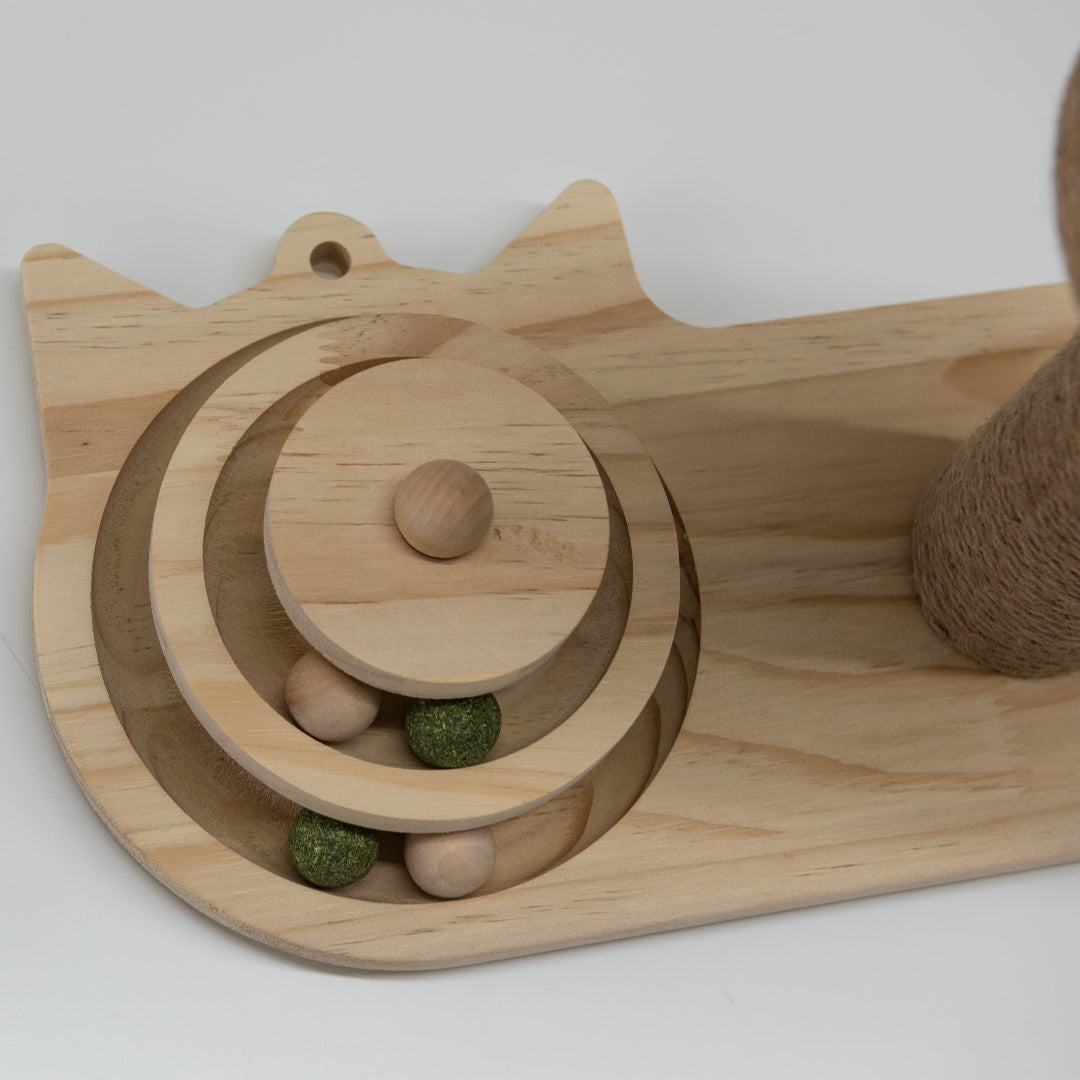
Why Catnip Makes Cats So Crazy (+ Safe Use Tips) | Pet Party
Delen
Catnip: a natural play stimulus and stress reliever
Cats are curious creatures with a strong need for play and stimulation. One of the most beloved ways to fulfill this need is catnip . For many cats, it induces a short, intensely cheerful mood. But what exactly is it, why does it work this way, and how do you use it safely?
What is catnip?
Catnip is the Dutch name for Nepeta cataria , a plant in the mint family. It contains fragrances that stimulate feline senses in a unique way. The main active ingredient is nepetalactone , an iridoid released when the plant is crushed or dried. This substance is absorbed through the nose and stimulates specific scent receptors, triggering a playful and sometimes even euphoric reaction in many cats.
Why do cats react to it?
When a cat smells catnip, the molecules bind to receptors in the nasal mucosa. This activates areas of the brain related to emotions and behavior. The result is recognizable: head and chin rubbing, rolling on the ground, licking, or gently nibbling the herb. In some cats, this is accompanied by cheerful kicking or tail wagging.
Not every cat reacts to catnip. Sensitivity is genetic; an estimated 50 to 70% of cats react, and kittens only from about three to six months of age. For cats who don't react, there are alternatives such as silver vine , which has even shown a higher response rate in studies.
How long does the effect last?
The effect usually begins within seconds and lasts five to fifteen minutes. This is followed by a "break" of half an hour to two hours, during which additional catnip produces little to no reaction. This natural recovery period prevents cats from becoming overstimulated.
Safe use of catnip
In normal doses, catnip is safe and non-addictive. Catnip works primarily through smell; ingesting a large amount can sometimes cause mild stomach or intestinal upset. One thing to note: concentrated essential oils are not suitable for direct application to a cat's skin or coat, as these substances can be harmful in their pure form.
Different shapes: from balls to spray
Catnip is available in several forms:
Loose herbs are ideal for snuffle mats, toys or for processing yourself.
Catnip balls in scratching posts are built into strategic places, so that cats are invited to play and scratch there.
Spray or mist is useful for freshening up scratching posts or toys, or making a new place attractive.
Catnip balls in scratching posts provide a long-lasting scent source. The balls remain effective as long as the scent is released; refreshing with loose catnip or spray extends the fun. Spray often has a slightly milder effect, but is ideal for marking a specific area without making a mess.
Behavioral control with catnip
One of the clever uses of catnip is to influence scratching behavior. By incorporating catnip into a scratching post or spraying it on scratching surfaces, you increase the likelihood that the cat will choose that spot instead of furniture or carpet. This not only provides enrichment but also positive, rewarding training.
Practical tips for use
- Place scratching posts in the cat's favorite resting or playing areas , as this maximizes the chance of interaction.
- Vary the shapes, alternating balls with loose herbs or spray to keep it interesting.
- Store catnip in a cool, dark and airtight container. Light and air accelerate the loss of fragrance.
- Take the break period into account, let cats decide for themselves when they want to play again.
Conclusion
Catnip is a simple, natural way to make your cat's life more enjoyable. Whether you choose a scratching post with built-in catnip balls or a handy spray, it provides enrichment, exercise, and sometimes even reduces scratching damage in your home. By cleverly using different shapes, you can get the most out of this fragrant favorite.
Want to surprise your cat with endless playtime fun and protect your furniture? Discover two of our favorites here.
1. https://www.petparty.nl/products/krab-speel-paddenstoel-kat-groen
2. https://www.petparty.nl/products/flower-tower-krabpaal-kat-40cm
Sources
-Bol, S., et al. (2017). Responsiveness of domestic cats to plant materials containing nepetalactone and actinidin. BMC Veterinary Research .
-Ellis, S.L.H., & Wells, D.L. (2010). The influence of olfactory stimulation on the behavior of cats housed in a rescue shelter. Applied Animal Behavior Science .
- Uenoyama, R., et al. (2021). The function of rolling and rubbing against catnip in felines. Science Advances .
- McFadden, T. (2018). Catnip: Its uses and effects. Journal of Feline Medicine and Surgery .
- Humane Society of the United States – Catnip facts and safety tips.
- American Society for the Prevention of Cruelty to Animals (ASPCA) – Toxic and Non-Toxic Plants List.
